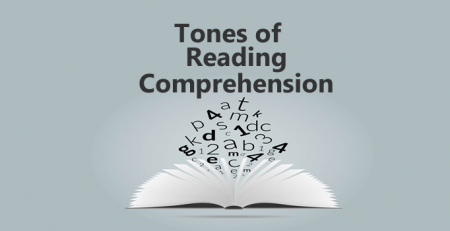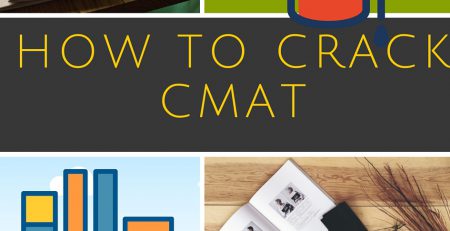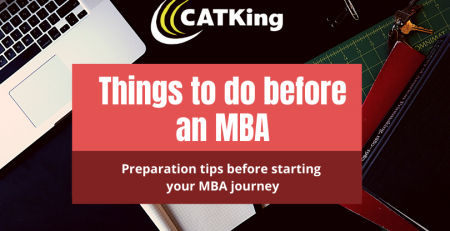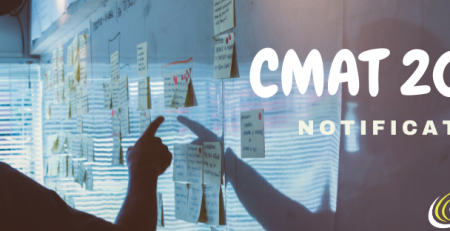How To Prepare for CMAT – Syllabus, Exam pattern, & Guide
CMAT, after CAT and XAT, is the most common admission exam for MBA candidates. The Common Management Admission Test, or CMAT, is a route to nearly 1,300 business schools in India. Over 70,000 applicants take CMAT each year, which is administered by the National Testing Agency (NTA) between January and March.
The most crucial aspect of preparing for the CMAT exam is understanding the syllabus and format. Because the CMAT is a managerial aptitude examination, its syllabus and format are similar to other MBA entrance tests. You don’t have to work too hard if you’re studying for the CAT, XAT, IIFT, or SNAP. CMAT has a new component – Innovation and Entrepreneurship – however that section is also not too difficult. Simply brush up on the fundamentals and you’ll be fine. This article will cover everything you need to know about CMAT preparation, including test curriculum, pattern, question papers, best CMAT strategy, and section-by-section strategies.
CMAT Syllabus
The CMAT exam is divided into four sections: quantitative techniques and data interpretation, logical reasoning, language comprehension, and general awareness. Last year, an extra section called Innovation and Entrepreneurship was added. The following are essential CMAT syllabus topics:
| CMAT Sections | Important Topics |
| Quantitative Techniques & Data Interpretation | Algebra, Geometry, Time-Speed-Distance, Allegation & Mixtures, Graph, Quadratic Equation, Linear Equations, Differential Equations |
| Logical Reasoning | Analytical Reasoning, Linear Arrangements, Number Series, Matrix Arrangements, Blood Relationship Tests |
| Language Comprehension | Reading Comprehension, Para–jumbles, Grammar, English Usage Errors |
| General Awareness | Current affairs, Economy, Business, World, Politics, Sports, Culture, Society |
| Innovation and Entrepreneurship | Fundamental concepts of innovation and entrepreneurship |
Also read: Free CMAT Study Material
Exam Pattern & Marking Scheme
CMAT is a timed exam that is administered by computer. The CMAT question paper has 100 multiple-choice questions (MCQs), each with four possible answers. The exam pattern has been updated for this year. The Innovation and Entrepreneurship part will be required in CMAT. As a result, you must also prepare for that area. The CMAT test pattern is as follows:
| CMAT Exam Pattern | Details |
| Number of sections | 5 (Quantitative Techniques and Data Interpretation, Logical Reasoning, Language Comprehension, General Awareness, and Innovation and Entrepreneurship) |
| Mode of examination | Online |
| Duration of exam | 180 minutes |
| Number of shifts | 2 |
| Number of questions | 100 |
| Total marks | 400 |
| Language of paper | English |
Section-Wise Preparation Strategy
CMAT Quantitative Techniques and Data Interpretation
The Quantitative Techniques & Data Interpretation segment of the CMAT test will consist of 20 multiple-choice questions. The difficulty level of questions in this section is predicted to be moderate to high, with Arithmetic questions dominating. Tables are used to answer the Data Interpretation questions.
Work on mathematical concepts and formulae to prepare for this portion of the CMAT. Memorize up to 20 tables for quick computation, such as squares, square roots, cubes, cube roots, fractions, and so on. To understand how to apply theoretical concepts to issues, study each topic in depth and practice a few sample questions shortly after finishing it. It will also assist you in determining how well you comprehended the subject.
Also read: CMAT Strategy to crack Quants
CMAT Logical Reasoning
As many sample Logical Reasoning questions as you can. Practice is the key to acing this section. Your performance will improve as you gain more experience answering real, verbal, and visual reasoning problems.
Logical Reasoning will bear the same weightage as the other parts in the CMAT exam, with 20 MCQs carrying one mark each. This section’s difficulty level is also moderate. This section can be cracked with enough practice on a variety of Logical Reasoning questions. You can also start solving everyday puzzles or sudoku which help you develop your logical mind. So make a habit of solving one every day.
CMAT Language Comprehension
The CMAT exam’s Language Comprehension component consists of one Reading Comprehension passage with around six questions. The passage is usually simple to understand. You must improve your word strength as 8-10 questions are centered on vocabulary. In this portion, questions are also asked about para jumbles, fill in the blanks, idioms, and sentence correction.
Develop a reading habit to help you study for the Language Comprehension component of CMAT. The more you read, the better your vocabulary, grammar, and reading comprehension will be.
Also read: VARC Preparation Tips
CMAT General Knowledge
The CMAT exam’s General Awareness part is the most difficult among the other sections. The majority of the 20 questions are about Indian events. Candidates studying for CMAT must keep up with current events in India and throughout the world. They must pay special attention to static GK since the more difficult questions of this section are usually from it. Always starts reading newspapers every day as it will help you get a good grasp on current affairs of the country which is very crucial in this section.
Also read: Tips to Ace GK Section for MBA Exams
CMAT Innovation and entrepreneurship
Candidates must prepare on the fundamental ideas of innovation and entrepreneurship for this newly introduced component. You should read everything they can on different sorts of entrepreneurs, different types of businesses, the fundamentals of running a business, the market, capital, and product innovation. CMAT question papers from 2021 and 2022 are the greatest resource for preparing for the CMAT Innovation & Entrepreneurship section. So that it will help you understand the types of questions asked in this area
Solve CMAT Question Papers & Mock Test
CMAT question papers and practice papers are important elements of the exam preparation process. One could argue that preparation is incomplete without practicing CMAT questions from past years. The CMAT question papers and solutions are made available by the exam administrators. Candidates must solve CMAT exam papers from previous years at least three to four times. They could also practice with CMAT sample papers and mock exam series to increase their speed and accuracy in answering questions.
The following are some advantages of reviewing past years’ CMAT question papers and sample papers:
- Solving CMAT question papers from prior years can provide you with an overview of the types of questions asked in the past and the weightage of each topic. So that it will help you make a strategy for the exam day.
- Exam preparation deficiencies can be identified by working through sample papers and mock test series. You will be able to determine which section you are strong in and which are your weaknesses.
- Mock tests will help you improve your speed and accuracy. You will also learn strategies and shortcuts for answering problems in less time.
- A series of simulated examinations will expose you to a wide range of questions that are divided into- difficult, easy, lengthy, and complicated. So you should be well prepared for unexpected problems on the real exam.
- Taking online practice examinations will help you prepare for the CMAT exam. You will have already taken an online exam, so there will be no first-time nerves in the actual exam.
If you want to crack the CMAT exam and get into your dream B-school then follow these tips proven by past students. These tips have helped a lot of students and so we recommend everyone to follow them. CMAT is overall less complicated than other entrance exams like CAT, XAT, etc. So make sure you give your best shot in this exam. Your career is in your hand so make the best use of it. We are here to help you in case of any difficulties or doubts you have regarding any MBA exams.
Read More: CMAT D-Day Strategy and last minute TIPS















